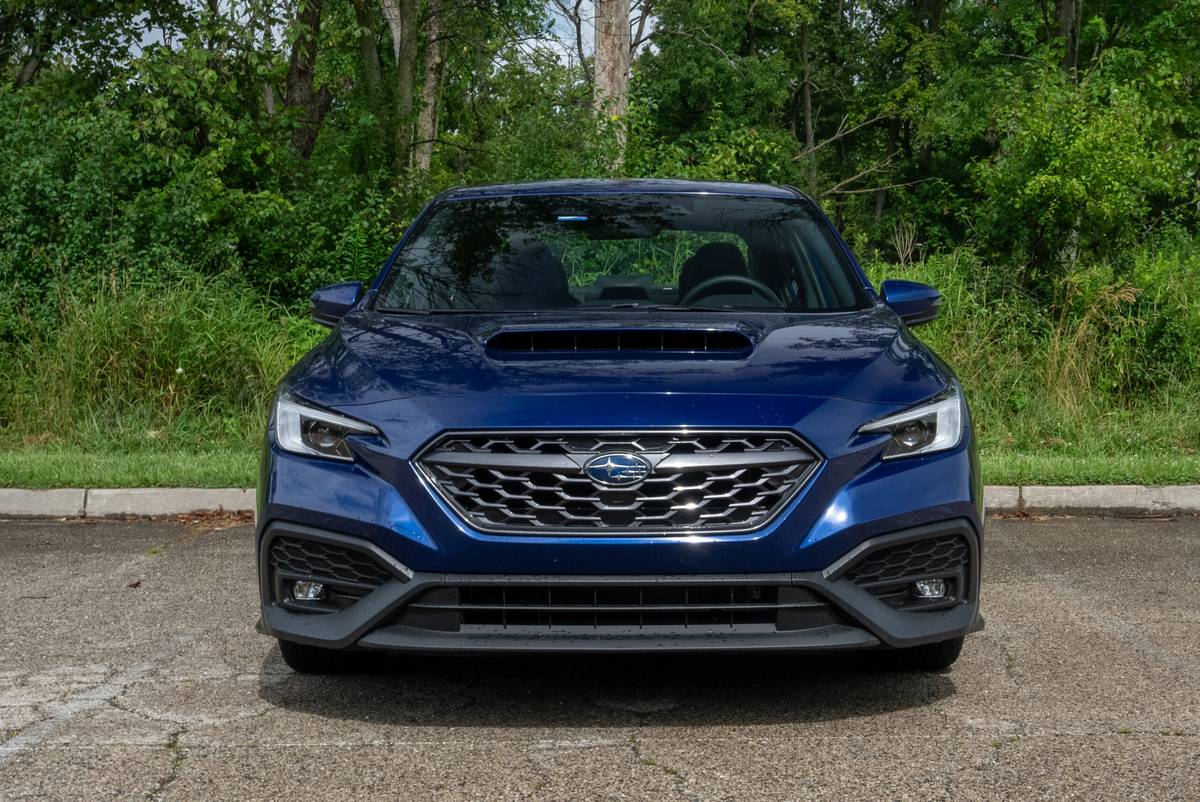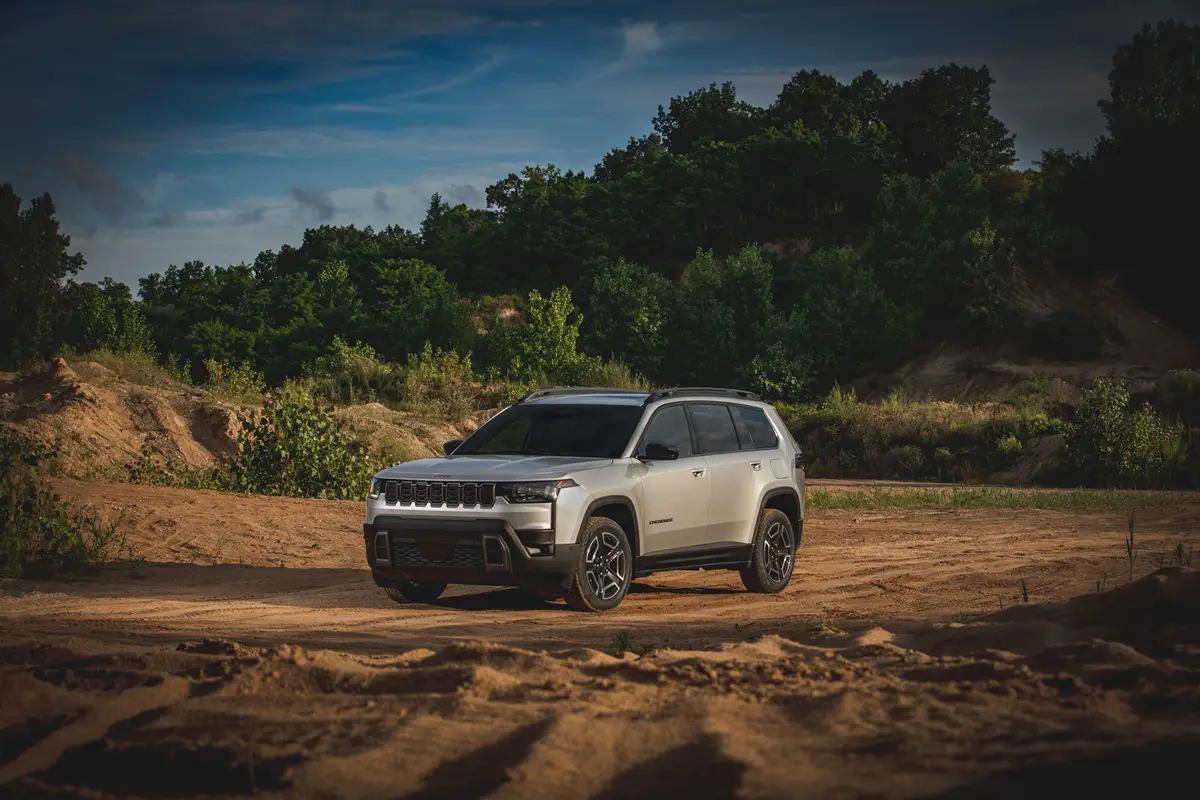Boston.com's view
If a Mirage fades, can something tangible take its place?
In the case of Mitsubishi, the answer is yes.
The Mitsubishi Mirage, the small, entry-level car from that automaker, has gone away.
In its place, Mitsubishi offers for 2002 the Lancer, a bigger (about 4 inches longer), taller, and better entry-level sedan. The Lancer comes in three models: the base ES, an upgraded LS (as tested), and a sport/rally version called the O-Z Rally Edition.
All have the same engine, a 2.0-liter, four-cylinder that produces 120 horsepower. And as far as I can tell from Mitsubishi literature, the only differences between the rally car and the LS are that the rally car has a spoiler on its rear deck, niftier-looking wheels, and black-on-white gauges. Rally? Really?
I suspect that Mitsubishi went bigger with its Mirage replacement simply because Americans don’t buy really small cars in any great numbers.
Witness what Toyota has done with the Camry for 2002. It is a much larger, taller car than in the past. The Lancer is meant to compete with the Camry, as well as with the Honda Civic, Nissan Sentra, and Mazda Protege. That’s tough competition.
But Lancer enters the fray with an aggressive stance – raked, rectangular headlights, protruding, sculpted bumpers front and rear, and a broad, sloping windshield that gives the car a cab-forward look commonly associated with Chrysler.
The LS comes only with a 4-speed automatic transmission (5-speed manual is an option on the ES and O-Z Rally) that is supposed to have an “adaptive” feature in which it “learns” your driving style and adjusts shift points acccordingly. It must not have liked my style, because it stuck to its original pattern of shifting up a bit earlier than I would were I in control, and shifting down later than I would entering a corner at speed.
But rally badges aside, the Lancer, as introduced, is not really a performance car. It is moderate fun on the road, at its best in a torque band between 3,500 and 4,500 rpms. It’s front-wheel-drive, but with its limited horsepower, torque steer is not an issue.
It’s got a nifty suspension setup with struts, tube shocks, coil springs, and antiroll bar up front and, in the rear, a multilink system with coil springs and antiroll bar.
The result is a highway ride that is remarkably smooth and quiet (the engine does start to whine a bit above 5,500 rpms and the sound echoes in the car).
It is an adequate passer of other cars (OK, maybe not the folks flying at 80 on the interstate, but you should not be passing them anyway) and moves deftly through lane changes.
On lesser roads, the suspension takes the worst of bumps a bit stiffly and transmits that thump into the car. In corners it sits relatively flat with only a bit of body roll. Push it hard in a corner and you will get a touch of understeer, but that smooths itself out in short order.
Something else that sorts itself out quickly is your p urchase price.
From the base $14,000 for the ES to the base of something over $16,000 for the O-Z, there aren’t a lot of options to tack on to a Lancer.
Consider that the LS offers such standard equipment as dual front air bags, air conditioning, a six-speaker CD system, power doors and windows, adjustable steering column, woodgrain accents for the dash, auto-dimming interior lights, a 60/40 split rear seat, a rear center armrest with cupholders, and an eight-way adjustable driver’s seat.
The only option on the tested model was a preferred equipment package that included ABS and dual front side air bags, an $800 boost to the price.
ES offers a convenience package that includes remote keyless entry, the split rear seats, rear armrest, and floor mats.
The Lancer is a car for folks who want a touch of sport but care most about roomy transportation – the legroom and headroom front and rear is remarkable for a car of this size – undertaken in cofort and at a g od price.
If you’re in the market for a tuner car, or a car you can rally, I’d look elsewhere – or wait until Mitsubishi offers a Rally Edition that is truly that – a car with more horsepower, tuned suspension, and performance exhaust. Right now, all you get beyond the as-tested LS are a badge and a spoiler.
2002 Mitsubishi Lancer LS
Base price: $15,897
Price as tested: $17,242
Horsepower: 120
Torque: 130 lb.-ft.
Wheelbase: 102.4 inches
Overall length: 177.6 inches
Width: 66.8 inches
Height: 54.9 inches
Curb weight: 2,734 lbs.
Seating: 5 passengers
Fuel economy: 26.9 miles per gallon
SOURCE: Mitsubishi Motors; fuel economy for Globe testing.
Nice touch
The woodgrain interior accents. Really quite an elegant, if subtle, touch in an economy car.
Annoyance
I know it’s not a performance car, but the front seats could use a little bolstering. They felt too flat both along the torso and outside the legs.
Latest news



